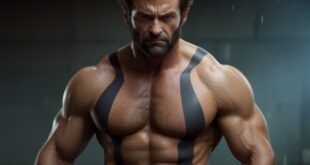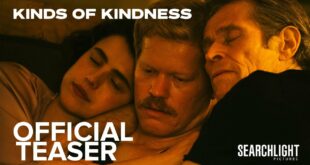7 Top Movies with the Best Cinematography
A movie should stick to its vision on all fronts during its production. Today’s article brings to you seven of the best movies with the finest cinematography.
When discussing the best movies ever made or if a picture is successful, the skill of cinematography is frequently disregarded. However, as you will discover today, with all the finest examples the filmmaking world has to offer, excellent cinematography can genuinely transform a film into an instant hit.
A cinematographer’s job is to represent the film’s concept and substance in an artistic-figurative, tangible, and compelling visual manner. In conjunction with their aesthetic character, the cameraman performs these creative challenges employing special tools and the discourse of their art.
Where to Watch?
You can also find these movies on a FireStick. However, before that, let’s talk about your movie buffering or taking long to load. Anyone would dislike that.
If you have ever experienced bandwidth throttling, you realize how detrimental it can be to your streaming experience unless you use a VPN. Check out this list if you don’t want to pay for a VPN service. You can use a free VPN for FireStick to avoid buffering while streaming your favorite movies. Your movie night could be saved with the help of a reliable VPN. Let’s now dive into our list of movies with phenomenal cinematography.
1. Valhalla Rising
Many of Nicolas Winding Refn’s movies are elegant. Valhalla Rising is also among them. The soundtrack is devoid of neon synth-pop. There is no glitz or glam in this film.
“Valhalla Rising” is an incredible film that strives to merge essential and beautiful elements while mixing blood and grime. This is a narrative about a quiet one-eyed northerner who travels across breathtaking Scandinavian landscapes with the boy he spared and then murdered people.
It is a tale of lunacy and faith. The movie’s popularity must also be ascribed to Mads Mikkelsen’s acting, which is mainly wordless all through the picture but conveys a bizarre flow of sentiments.
2. Stalker
Andrei Tarkovsky’s film has no emotional visuals, and the surroundings are devoid of vibrant watercolor hues. At points, “Stalker” even goes monochrome for no particular reason. At first impression, the film does not appear to be “art,” but instead is as ordinary, dull, and unremarkable as possible.
However, it is no surprise that Tarkovsky substituted three videographers while working on the film. He also repeatedly disputed with his mentee, Georgy Rerberg, compelling the team to re-enact the identical sequences countless times. Every frame in “Stalker” is the culmination of backbreaking labor and the author’s distinct vision, which may appear basic at first glance.
The film’s aesthetic precisely accentuates its contents, and no other production method would likely achieve the same result. The camera is immobile in most sequences. The actors appear to be consumed by the space surrounding them – a vast and confusing Zone that simultaneously destroys and exposes new information.
As though we are journeying through this beautiful environment alongside the characters, we sense the concealed but apparent power of it. “Stalker” immediately affects the viewer’s psyche, and it is pointless to try to comprehend Tarkovsky’s film. You must feel it, and flawless artistic expression will aid you in this endeavor.
3. Conformist
Even though it has been 40 years since the premiere, the film retains its aesthetic freshness. From shapes to light, practically everything in the movie is geometric and chilly, telling the story of an individual compelled to appear to be someone they are not.
Vittorio Storaro handled the cinematography. In filmmaking, he is just as influential as Roger Dickins. In theory, practically any of his works might be included on this list.
4. Suspiria
Dario Argento’s film is considered a classic. It is weird at times – the protagonists’ bizarre conduct, the convoluted plot, the repetition of the same individuals in various roles. However, every frame is what made this film an absolute masterpiece. This is where many neon horror films get their visual aesthetic from.
5. Blade Runner 2049
“Blade Runner 2049” is with no doubt the most stunning sci-fi film of the decade. Despite borrowing the broad look from the first “Blade Runner,” Denis Villeneuve and Roger Dickins took a different approach to the film’s scenery.
If Rick Deckard spent most of his time wandering through crowded, tight alleyways, Kay spends much of her time wandering across open expanses, surrounded by majestic and straightforward designs. A film with relaxed camera work and many vivid colors creates a captivating spectacle.
6. Solaris
Here is the champion of the Cannes Film Festival’s Grand Prix. It is regarded as one of the finest sci-fi pictures in cinematic history, per the findings of numerous polls. One of the primary attributes is the proficiency of camera technique, which is now studied in film schools.
Tarkovsky demonstrated that, with the aid of an aesthetic atmosphere, far more can be accomplished than using only the most sophisticated and expensive effects. The movie is excellent, thoroughly engrossing.
7. Citizen Kane
For long, “Citizen Kane” was voted “the best movie of all times” in polls of film experts. The director and protagonist Orson Welles eschewed the traditional narrative structure, requiring the viewer to travel through the characters’ past, present, and past again.
He also discovered new kinds of videography that were groundbreaking at that time. That is without even mentioning the film’s great plot.
Conclusion
A cinematographer’s work can transform a drab film into an absolute gem. While many other factors influence a film’s value, cinematography sticks out as the underappreciated dark horse of the cinematic arts.
 Epic Heroes Entertainment Movies Toys TV Video Games News Art Pop culture news goodness
Epic Heroes Entertainment Movies Toys TV Video Games News Art Pop culture news goodness





